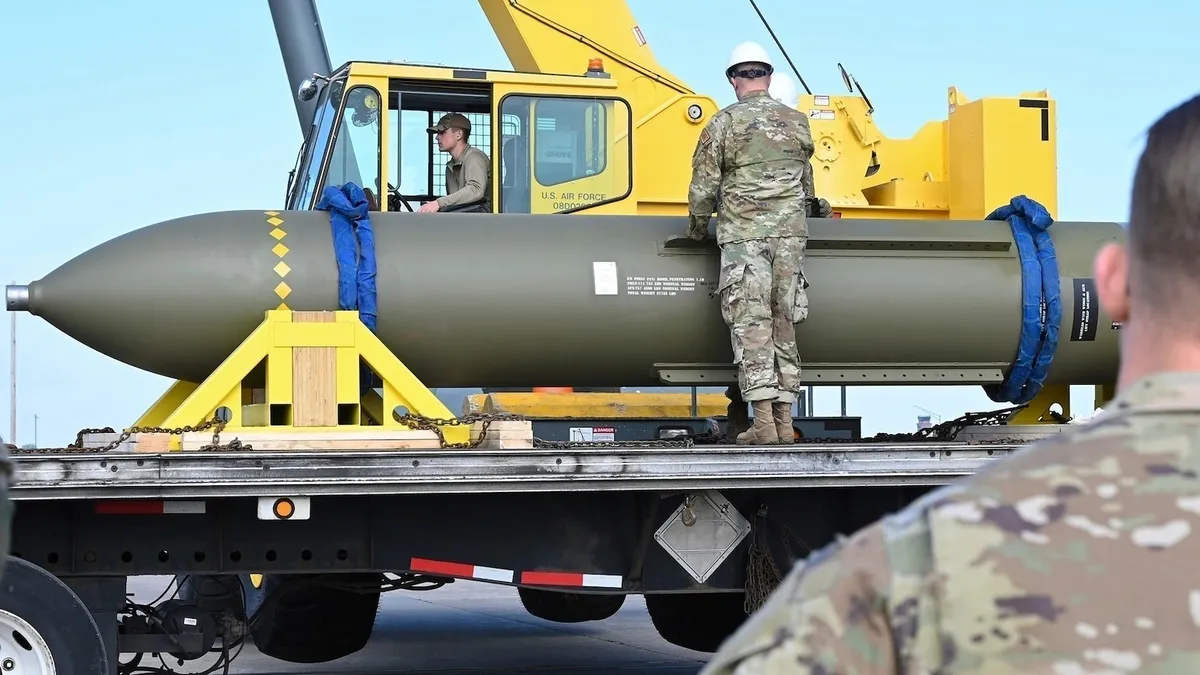
A recent analysis by a national security expert highlights the complexities and potential ineffectiveness of a U.S. military strike on a key Iranian nuclear facility. According to Joe Cirincione, a seasoned expert in nuclear proliferation who has advised Congress and global leaders, even the deployment of the U.S. military's advanced bunker-buster bombs might not yield the desired results. This assertion was made during a discussion with ABC News on Thursday.
At the heart of President Donald Trump's deliberations regarding military action against Iran is the Fordo nuclear enrichment facility, strategically located in northwest Iran. Experts estimate this facility is buried approximately 300 feet deep within a mountain, reinforced with thick layers of concrete and metal, making it a challenging target for any military operation.
The U.S. possesses the GBU-57 A/B Massive Ordnance Penetrator bomb, commonly referred to as a bunker buster. This powerful weapon is designed to penetrate underground targets up to 200 feet deep before detonating. However, Cirincione cautioned that even with this advanced technology, success is not guaranteed. "Fordo is not an easy target," he stated, emphasizing the complexities involved in such an operation.
Cirincione elaborated on the limitations of using the bunker buster against the Fordo facility. He indicated that penetrating 300 feet of reinforced concrete and mountain would require a series of bomb drops. "You would need to drop a bomb that creates a crater, followed by additional bombs to target the facility effectively," he explained. Even with this extensive bombing strategy, the damage might only be partial.
Moreover, Cirincione pointed out that Iran's government possesses the necessary knowledge and resources to continue its nuclear ambitions despite any military strikes. "Even if some damage occurs, Iran has sufficient enriched uranium and centrifuges located in other sites to resume its program swiftly," he warned. "You can slow it down, but they can start again quickly, and they are aware of that." This highlights the challenges in attempting to halt Iran's nuclear capabilities through military means alone.
Recently, the International Atomic Energy Agency (IAEA) passed a resolution indicating that Iran has breached its non-proliferation agreements, illegally stockpiling enriched uranium. IAEA Director General Rafael Grossi noted, "I've been there; it's half a mile underground," referring specifically to the Fordo facility. This statement underscores the significant hurdles that any military action would face.
In the wake of the IAEA's actions, Israeli forces conducted strikes on Iranian targets, following Prime Minister Benjamin Netanyahu's assertion that Iran could develop a nuclear weapon in a remarkably short timeframe. However, Iranian officials have categorically dismissed these claims, asserting that they are not pursuing a nuclear weapon.
As tensions escalate, White House spokeswoman Karoline Leavitt announced that President Trump would reach a decision regarding potential military action against Iran within the next two weeks. Cirincione emphasized that continued military strikes may not be the optimal approach for either Israel or the U.S. if the objective is to prevent Iran from developing nuclear weapons. "Once you recognize that there is no military solution to this problem, the focus should shift to diplomatic efforts that encourage Iran to roll back and ultimately end its nuclear capabilities," he concluded.
In summary, the prospect of a U.S. attack on Iranian nuclear facilities, particularly the Fordo facility, is fraught with complications. The limitations of existing military technology, coupled with Iran's resilience and resourcefulness, suggest that diplomatic solutions may ultimately be more effective in addressing the challenges posed by Iran's nuclear program.